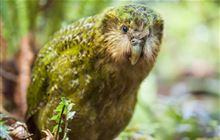Relief as rat ruled out on Whenua Hou
Archived content: This media release was accurate on the date of publication.
Introduction
DNA analysis has ruled out a Norway rat as the culprit for a dropping found on Whenua Hou/Codfish Island last week, news welcomed by DOC.Date: 11 December 2017
DOC Murihiku Operations Manager Tony Preston says he is thrilled with the result, and praised the team’s quick work on the response.
“Whenua Hou is one of our most important and valuable sites for biodiversity and any evidence of incursion is treated very seriously,” Tony Preston says.
“Rats breed at an alarming rate – one female can reproduce up to 12 times a year, having between eight to 12 pups per litter. With these kind of timeframes, days and weeks matter - it’s best to take a better safe than sorry approach.”
The dropping was found last Wednesday by a university researcher studying south Georgian diving petrels. Pest experts confirmed the shape and look of the dropping was most consistent with a Norway rat. Additionally, a mottled petrel carcass with signs of predation had recently been discovered on the island. A necropsy had suggested harrier predation; however, DNA results were inconclusive with Norway rat DNA, among other things, detected in small amounts.
These factors combined were enough to launch a response plan and deploy additional traps and resources to the island, Tony says.
“As the home of the Kākāpō Recovery Programme, and being a sanctuary to many other vulnerable native species such as southern short-tailed bats, kākā, fernbirds, red-fronted and yellow-crowned parakeet and mohua, our priority was ensuring these species were thoroughly protected.”
There was already a network of traps on the island, however plans were in place to increase the volume of these in the new year, so it was a bonus to be able to extend the network before Christmas, Tony says.
Pest detector dogs will also remain on the island to conduct a thorough search over the next week for additional peace of mind.
Today's confirmed DNA results point the finger at a kererū. The look and shape of the sample are not generally consistent with a kererū dropping, however many factors, including diet and environment can lead to changes in dropping consistency, Tony Preston says.
“Whatever the factors, we’d much rather be dealing with a strange kererū poo than a rat incursion.”
Background information
Whenua Hou is located 3 km from the coast of Rakiura/Stewart Island. It has been predator free since 1998. As a nature reserve it has the highest protection available in New Zealand and entry can only be gained by permit with strict quarantine rules in place.
Contact
For media enquiries contact:
Email: media@doc.govt.nz

